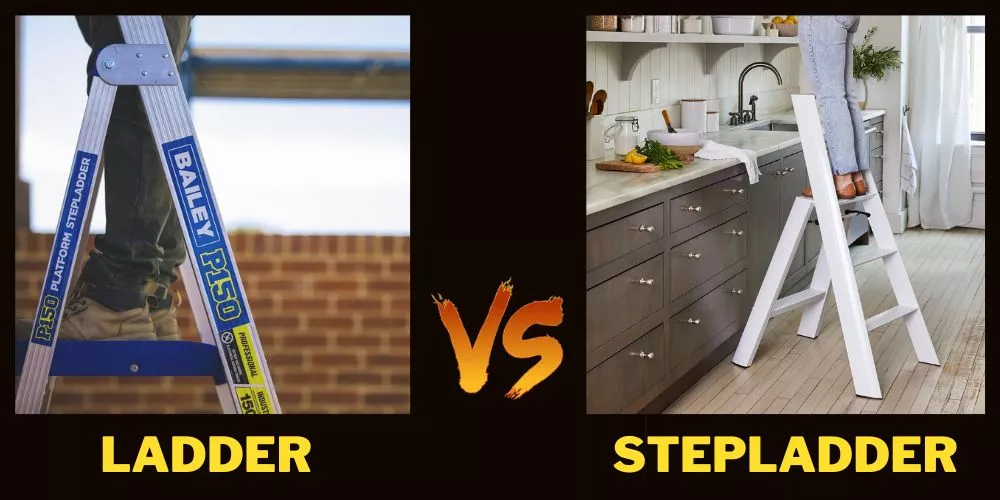Building and construction tasks are often characterized by working at varying heights, using different types of equipment.
The type of tool you use largely impacts the efficiency, safety, and ultimate success of your work.
Scaffolding systems and combination ladders are two common approaches used by professionals and DIY enthusiasts alike.
But, is combination ladder better than scaffolding?
Well, in this article, we aim to delve deeper into evaluating the pros and cons of both the combination ladder and scaffolding, drawing from industry insights, research statistics, and hands-on experiences.
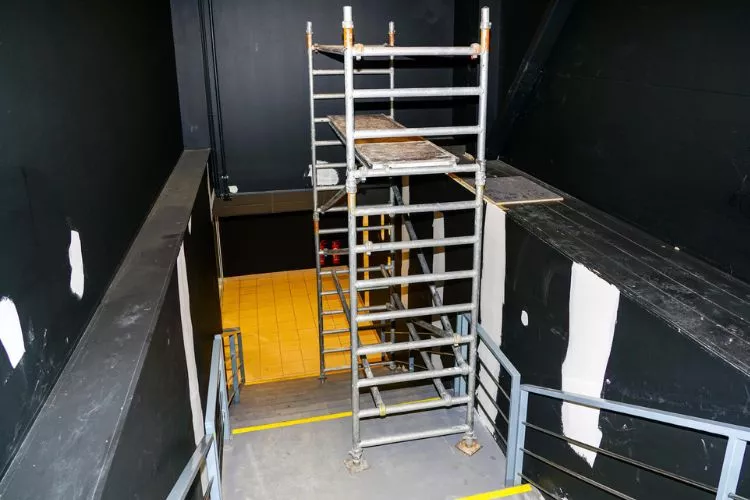
Our objective is to provide a comprehensive and unbiased outlook to guide you in choosing the best equipment for your specific needs.
Is Combination Ladder Better Than Scaffolding?
The decision between a combination ladder or scaffolding often depends on the specific task. A combination ladder, with its ease of use, flexibility, and cost-effectiveness, is better suited for simple, short-duration tasks, DIY projects, or work in confined spaces.
Conversely, scaffolding, though more costly and time-consuming to set up, provides a stable, spacious work area, making it ideal for complex, large-scale tasks, especially those at higher heights.
Therefore, neither is universally ‘better’, but each has its place depending on the requirements of the task at hand. Always prioritize safety and suitability when choosing between the two.
🪜 Safety
Scaffolding provides a more stable and spacious platform for individuals and tools, making it safer for complex tasks or those requiring heavy equipment. By contrast, a combination ladder may not offer the same level of safety, especially for tasks requiring a lot of movement.
However, when used correctly, a combination ladder can be a safe tool for smaller or simpler tasks.
🪜 Flexibility & Convenience
Without a doubt, combination ladders win in terms of flexibility and mobility. They are easily adjustable to varying heights and positions, suitable for both indoor and outdoor tasks. This versatility gives them an edge over scaffolds, which require considerable effort and expertise to set up and move.
🪜 Cost-Effectiveness
If you’re focused on costs, a combination ladder is a more budget-friendly option. Scaffolding systems, especially those for large-scale projects, can be quite expensive. However, it’s important to remember that the overall value isn’t just about the upfront cost – functionality and safety should also be considered.
🪜 Skill Level & Setup Time
Scaffolding setup involves a learning curve and can consume a substantial amount of time. It may also require multiple people to efficiently set the structure up. Combination ladders, on the other hand, are more straightforward to set up, even by a single person.
This makes combination ladders more suitable for DIY enthusiasts or tasks with time constraints.
In conclusion, the choice between a combination ladder or scaffolding boils down to the specifics of your project. For smaller, simpler tasks or scenarios with limited space, a combination ladder might offer more benefits.
On the other hand, large scale, complex tasks may be better tackled with a scaffolding system, providing more safety and stability. As always, it’s paramount to prioritize safety, irrespective of the tool you choose, with adequate training and attention to safe work practices.
Which is Best for Specific Needs: Combination Ladder vs. Scaffolding
The choice between combination ladders and scaffolding systems largely depends on the specific requirements of the task at hand. Here’s a detailed analysis of the strengths and shortcomings of each option, focusing on key elements such as cost-effectiveness, safety, flexibility, and ease of use.
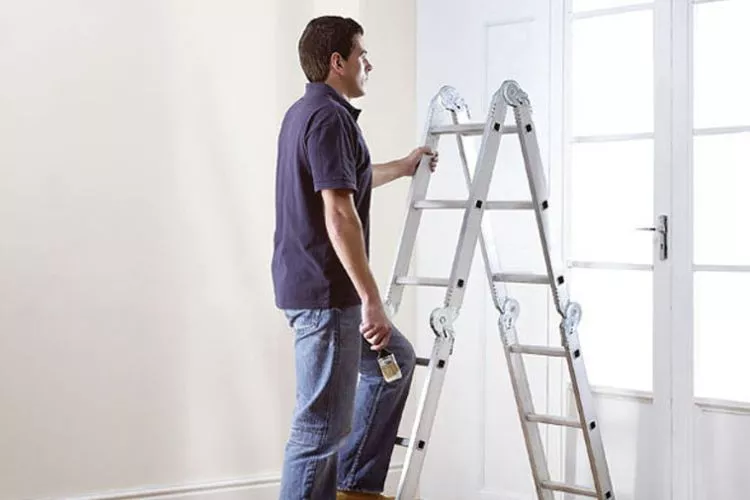
The nature of your project largely determines whether you should opt for a combination ladder or scaffolding. Here, we break it down based on specific needs:
🪜 DIY Home Improvement Projects
For most home tasks, such as painting, minor repairs, or cleaning gutters, a combination ladder is generally the best choice. It’s easy to use, adaptable to different heights and surfaces, and convenient for quick tasks.
🪜 Professional Construction Projects
Large-scale construction projects usually warrant the use of scaffolding. Whether it’s building a house, renovating a multi-story building, or doing extensive repairs, scaffolding provides more safety, capacity for multiple workers, and space for tools and materials.
🪜 Indoor Tasks
For indoor tasks, particularly where space is limited and the working height isn’t excessive, a combination ladder is ideal. It’s easier to navigate inside a building with a ladder than setting up a full scaffolding system.
🪜 Outdoor Tasks
For extensive outdoor tasks involving higher heights, such as roofing, exterior painting, or building constructions, scaffolding tends to be the preferred choice. It offers stability and a high safety margin, particularly on soft or uneven ground.
🪜 Budget Constraints
If budget is a pressing constraint, then a combination ladder becomes an attractive choice. It’s generally less expensive than scaffolding. However, always remember that safety should never be compromised because of budget restrictions.
🪜 Short-duration Tasks
For tasks that can be completed quickly, a combination ladder, with its ease of set-up and mobility, is a practical choice. Scaffolding would be more suited for projects requiring several days or weeks to complete.
In summary, the choice between a combination ladder and scaffolding will be influenced by factors like project duration, indoor vs. outdoor work, nature of the work (DIY vs. professional), and budget constraints.
Remember, regardless of the equipment, safety should always come first. Whichever option you choose should match well with your specific needs, providing a balance between cost-effectiveness, efficiency, and safety.
What are the rules for ladders on scaffolding?
Scaffolding and ladder usage necessitates careful attention to safety procedures to avoid falls and accidents. When it comes to using ladders on scaffolding, there are certain guidelines that need to be followed:
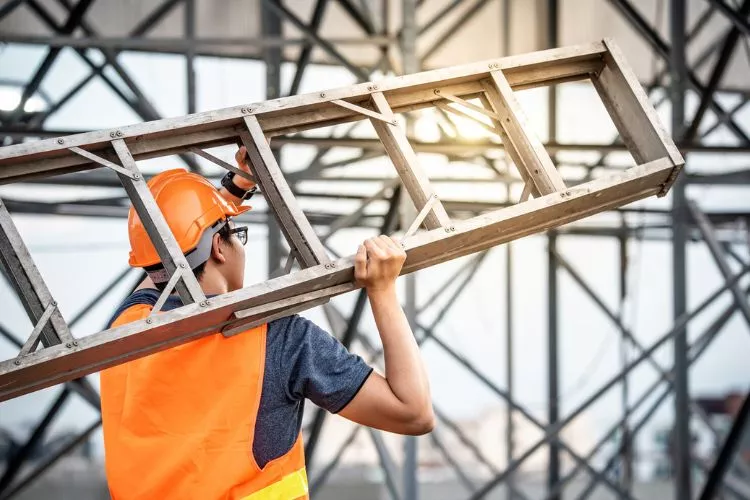
- Proper Setup: The ladder and the scaffold should be properly assembled, with each part carefully checked for faults or wear. The scaffold should be leveled and fully planked, providing a stable platform for ladder placement.
- Ladder Positioning: Ladders must be placed on scaffold platforms that are fully planked and firm. Never place a ladder on loose planks or unstable parts of the scaffold.
- Ladder Security: The ladder must be securely positioned so it doesn’t slip or tip while in use. A good rule of thumb is for the ladder to extend about 1 meter above the scaffold platform for steady holding.
- Right Angle Positioning: As a safety rule, ladders should be positioned at a 75-degree angle, or a 1:4 ratio – for every four parts up, one part out. This helps ensure adequate stability.
- Fall Protection: Even when using a ladder on a scaffold, it’s essential to use appropriate fall protection, such as guardrails or personal fall arrest systems, particularly for scaffolds over a certain height.
- Safe Practices: Always face towards the ladder when climbing up or down, and maintain three points of contact with the ladder at all times (e.g., two hands and one foot). The use of a tool belt or rope-and-pulley system is advised for carrying tools and materials to height, rather than carrying them in your hands while climbing the ladder.
- Training: All workers who are involved in erecting, disassembling, moving, operating or inspecting the scaffold are required to have suitable scaffolding training.
Remember, these rules should be implemented at all times when using ladders with scaffolding to ensure safety and effectiveness at work. Any breach of these guidelines could potentially lead to accidents or injuries, so it’s crucial to ensure strict adherence.
When should we use the combination ladder?
A combination ladder’s flexibility, ease of setup, and versatility make it an ideal tool for several tasks. Here are situations where a combination ladder is appropriate to use:
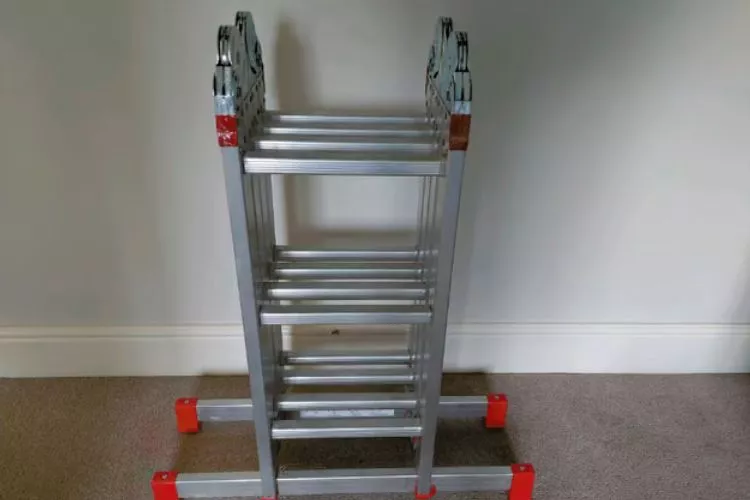
- For Simple Tasks: Simple tasks such as changing light bulbs, minor painting works, or reaching high shelves within your home are best tackled with a combination ladder.
- For DIY Projects: If you’re a DIY enthusiast working on a project that requires working at different heights, such as decorating your room or installing a new fixture, a combination ladder can be a great, user-friendly tool for you.
- In Confined Spaces: If you’re working in a tight or confined space where large equipment such as scaffolding cannot fit, a combination ladder is an excellent choice due to its compact design and adaptability.
- For Short-Duration Tasks: If the task at hand can be completed quickly and does not require the support of a large platform or the involvement of multiple workers, a combination ladder would be suitable.
- Budget Considerations: If you’re constrained by a budget, the combination ladder, being more cost-effective than a full-scale scaffold system, could be your tool of choice.
- Portability Needs: If your task requires frequent moving or adjusting heights, a combination ladder, with its lightweight design and manageable size, can be a practical choice.
It’s important to remember that even though a combination ladder brings conveniences, safety should never be compromised. Always ensure that the ladder is firmly grounded and stable before climbing, and avoid overreaching from the ladder to prevent tipping over.
Frequently Asked Questions (FAQs)
How safe are combination ladders?
Answer: Combination ladders are generally safe when used correctly. They are designed with multi-functionality in mind, giving versatility in various work environments. Their safety highly depends on proper setup, maintenance, and user behaviour. They should be placed on level, stable ground and shouldn’t be used for jobs requiring heavy tools or movement beyond their base. It is critical to observe all safety guidelines such as not exceeding the weight limit and always having three points of contact when climbing.
What type of ladder is approved for industrial use?
Answer: Industrial ladders designated as Class 1 or EN131 Professional are approved for industrial use. These ladders are built to withstand heavy-duty tasks and are rigorously tested for durability and stability. Class 1 ladders are designed for heavy industrial work, while EN131 Professional ladders are suitable for all professional and non-professional activities. Both types are built to support heavier loads and offer more structural durability than ladders intended for domestic use.
What class of ladder is used for scaffolding?
Answer: In general, Class 1 or EN131 Professional ladders are used with scaffolding for commercial or industrial tasks. These ladder types are specifically built to withstand heavier loads and rigorous use, making them suitable for scaffolding work. It’s important to note that the ladder’s maximum load capacity includes the user’s weight as well as any tools or materials being carried. Always ensure ladders are in good condition and used in line with safety regulations.
Conclusion:
Deciding whether a combination ladder or scaffolding is better largely depends on the task at hand.
While combination ladders offer flexibility, ease of use, and adaptability, especially for shorter, simple tasks or work in confined spaces, scaffolding provides a more stable and broader work platform, ideal for larger-scale or higher-level tasks.
Factors like project duration, budget, task complexity, and safety requirements should guide the choice between the two.
Ultimately, it’s not about which tool is universally better, but rather about selecting the most appropriate tool to ensure efficient, safe, and effective work.


